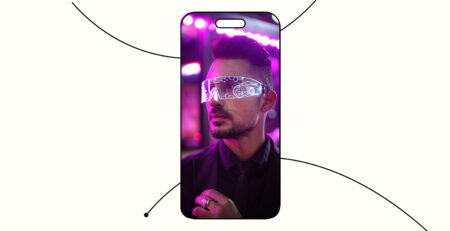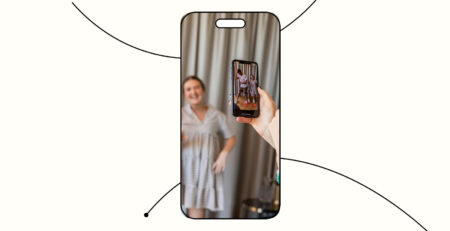Brands are gambling millions by using the same legacy Super Bowl equation – is there a way to up the odds?
The big game is a big deal for a reason. If it’s anything like last year, Super Bowl LIX will have more than 120 million TV viewers, aka 42% of US households. But just because it’s a big deal, doesn’t mean it’s an easy win for every brand that invests.
The OG Super Bowl marketing equation is something like this:
KPI + ad type + moment in time + financial investment = big game ad
And brands favor a consistent set of variables:
Reach + TV commercial + during the game + millions of dollars = big game ad
KPI ad type moment in time financial investment
It’s a seemingly one-size-fits-all set of variables that secures any brand one big game ad with a limited set of additional guarantees. Brands tend to bank on a set of assumptions to make their investment worthwhile: a lot of people will see your ad, probably remember something about your brand, and might even talk about it.
- A lot of people will see your ad. Kantar found that the commercials were the third most popular aspect of watching the big game, ahead of even the halftime show.
- Some people might remember your brand. A Kantar study revealed that 19% of consumers in the US say that Super Bowl advertising makes them aware of advertiser brands.
- People might even talk about your brand, which can drive some brand results if compounded with #2. A University of Minnesota study showed that 16% of brands see an increase in word-of-mouth metrics as long as a month after the game.
So, if stars align, you’ll see true longevity in brand momentum.
But as most brands have learned, stars don’t easily align.
In fact, only 33% of consumers actually remember seeing a Super Bowl commercial.
This begs the question: why isn’t the equation working anymore?
Our theory: it’s not the equation that’s broken, it’s the variables brands choose to input. Thus the key to transforming a big game ad into a big game win is in variable selection.
By analyzing some of the biggest recent brand wins, we’ve identified a list of variables that lead to a big game win, and thus create successful Super Bowl marketing disruptors. A disruptor inputs at least one of these variables in their equation:
- Think outside of reach — measure success against more tailored KPIs. While the traditional reach and frequency KPIs are the most obvious for the Super Bowl, keep in mind that a disruptor equation only wins when it’s most tailored to the brand. When you plan a Super Bowl execution, it’s important to identify where the true value lies. Is it most important to pay for eyeballs to a mass audience, or do you actually want to drive conversation or sales? Volvo was one of the first modern brands to do this well. In 2015, they didn’t have a mass reach goal — their KPI was to steal attention and share from competitors. They used Twitter (yes, it was still called Twitter back then) to have people tweet them to win a car with the catch being that they had to send the tweet while an ad for another car brand was airing. This pulled eyes from the multi-million dollar commercials of competitors and made Volvo top of mind. The Volvo hashtag was the most tweeted auto hashtag during the game, and its XC60 car had the highest February sales increase of any car in its segment (70.7% year-over-year).
- Think outside of the commercial — leverage the most brand-relevant ad types. Recent research suggests that campaigns with multi-format creative increase overall brand engagement and lead to a greater likelihood of conversion. We’re already seeing brands try this variable for the 2025 game: Dorito’s will have an in-game ad, but with a twist — it’s being chosen ahead of time by fans. The brand launched its first round of video ads during conference championship weekend with major Kansas City Chiefs players sitting in on a marketing focus group. This brought attention to the ad, which culminated with a CTA leading viewers to an online place to vote for which fan-created ad should run during the Super Bowl. Dorito’s social media accounts are also encouraging people to participate in the voting which means it’s reaching consumers across mediums in a variety of formats, from TV and online video ads to interactive social posts. In the era of the influencer and UGC, time will tell how this strategy pans out for the brand.
- Think outside of the game — use it as one moment in a larger brand narrative. This will set the stage for greater brand engagement and understanding. A great example of this is Dunkin. It debuted its first Super Bowl ad in 2023 and the day after the game, had its highest sales day ever. Dunkin continued this momentum throughout the year with a mix of paid, earned, and owned media, which made its second big game ad (airing in 2024) one major piece of a larger brand puzzle. This ultimately made the 2024 in-game ad hyper-relevant to a mass audience, helped by the slew of major celebrities in the commercial. Post-ad activations continued the narrative with a mix of influencer activations, well-timed social content, and unusual product sales (the Dunkin jumpsuit from the commercial sold out in 19 minutes).
- Think outside of a large investment — you don’t have to break the bank. Identify what makes the most sense for your audience and investment level. Sure, the traditional multi-million dollar broadcast commercial is an option, but it’s not the only way in. Take Frank’s RedHot as an example. Last year, Frank’s didn’t have a big game commercial. Instead, it used owned social channels to show celebrity Jason Kelce adding Frank’s RedHot to food dishes that had been featured in in-game commercials. It hacked the social media algorithm to show its ads during conversations about the in-game food commercials… after spending zero dollars on an in-game ad. This made the branded content timely, creative, and ultimately a conversation piece. It ended up earning Frank’s a slew of impressive brand and performance metrics: 5.39 billion+ earned media impressions and a 71% increase in Instacart Frank’s RedHot buyers who hadn’t purchased the product within the last six months.
The stats are clear: the winning Super Bowl marketing equation is no longer static; instead, it’s full of carefully tailored variables that best fit the brand.
SOURCES
- Disruptor: https://languages.oup.com/google-dictionary-en/
- Kantar: https://www.kantar.com/north-america/inspiration/sport-leisure/how-much-is-a-super-bowl-commercial-and-is-it-worth-it
- Viewership: https://www.si.com/nfl/how-many-people-watch-the-super-bowl-statistics-and-ratings-history
- Ad cost: https://www.statista.com/statistics/217134/total-advertisement-revenue-of-super-bowls/
- Frank’s red hot: https://www.adweek.com/brand-marketing/super-bowl-case-study-inside-a-spicy-social-marketing-win-for-franks-redhot-and-jason-kelce/#:~:text=The%20result%20was%205.39%20billion,within%20the%20last%20six%20months.
- Volvo: https://shortyawards.com/8th/best-twitter
- Ad formats: https://www.linkedin.com/pulse/stand-out-using-multiple-ad-formats-003-rob-muldoon#:~:text=In%20conclusion%20of%20the%20research,multiple%20messages%20in%20different%20ways.




